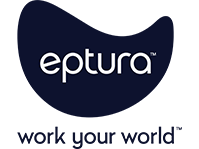In episode 337, host Mike Petrusky speaks with Michelle Gladieux, president of Gladieux Consulting and author of the book “Communicate with Courage: Taking Risks to Overcome the Four Hidden Challenges.” Gladieux focuses on leadership and communication, strategic planning, and building creative tools that yield personal and professional development. On the show, she shares her views on communication and how it applies to managing the built environment. Communication involves risk, engaging in a new mindset or behavior with no guarantee of the result, so Gladieux offers strategies to confront the four hidden challenges in communication: hiding from risk, defining to be right, rationalizing the negative, and settling for good enough.
Agenda
- Importance of effective communication
- Role of risk in communication
- Hidden challenges to effective communication
- Impact of physical versus digital communication
What you need to know: Workplace takeaways
Takeaway 1: Communication is a calculated risk that can lead to personal and professional growth
There’s a risk to communication because it means engaging in new mindsets or behaviors with no guarantee of the outcome. But individuals need to be brave enough to take it to grow, personally and professionally.
Gladieux emphasizes how this way of thinking about risk helps people expand their perspectives, engage in meaningful dialogue, and overcome challenges.
“The book was written to help people calculate the risk in communication and know which risks to take,” she adds.
Takeaway 2: Emotional intelligence gains precedence over technical skills in today’s workplaces
There’s an important shift from the traditional focus on technical skills to an appreciation of emotional intelligence (EQ). People need to be aware of their own feelings and those of others to support job satisfaction and team dynamics.
“I think IQ was always celebrated as what’s most important. Are you book smart? Can you figure out problems? What is your technical savvy? And those things remain important, but we need to add emotional intelligence and being able to deal with our own feelings and others’ feelings if we really want high job satisfaction for ourselves, for others,” Gladieux explains.
Takeaway 3: In-person interaction holds a unique value in workplace communication
There can be tensions between digital and physical interactions in the workplace. While digital communication delivers convenience and efficiency, there’s also a unique value to in-person interaction, particularly in terms of trust-building and cohesion among team members.
“I always ask the teams that I’m training or coaching or if we’re in strategic planning. I ask them how often do all of you get together where you are sharing space together physically? It doesn’t have to be all the time. And these days it might even feel like a luxury. One tip I would have is to do your best to make it happen at least occasionally and then make it worth their while,” Gladieux shares.
She emphasizes the importance of making physical meetings meaningful and worthwhile, suggesting that these occasions could be leveraged as professional development opportunities such as learning or training sessions.
Workplace management insights
- Communication is extracurricular and involves risk, defined as engaging in a new mindset or behavior with no guarantee of the result.
- The four hidden challenges to effective communication are hiding from risk, defining to be right, rationalizing the negative, and settling for good enough.
- Rationalizing the negative involves shielding oneself from taking smart chances, often due to a pessimistic mindset.
- Hiding from risk involves fear of showing who we are or standing behind our values.
- Physical communication can often build trust and unity more easily than digital communication, but it’s important to make these meetings worth it.
- There’s a need for better communication in workplaces, and leaders should guide their teams in this aspect.
Subscribe to the BREAKDOWN newsletter









